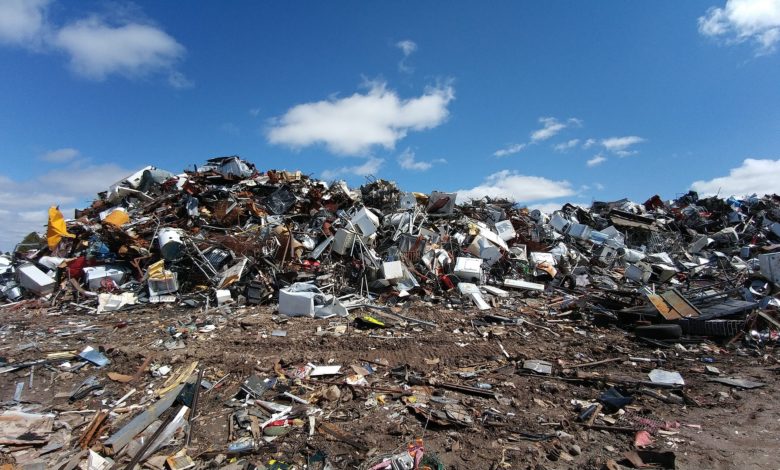Recycling of Waste

Looking into the garbage cans, it is seen that large amounts of garbage are thrown out every day. It is not that difficult to estimate how large the weekly, monthly or even yearly amount of this waste is. Although it may be tempting to think that garbage has actually disappeared, it is necessary to examine what actually happens after getting out of that garbage can.
Information on Solid Waste
According to the data of a research first conducted in the USA, it is known that Americans throw 2.5 million plastic bottles every hour. Every person in the USA throws an average of 2 kg (about 4.4 pounds) of litter every day. These are different from other waste generated such as construction debris, agricultural waste or industrial waste. Three methods are used to deal with all these wastes. These are incineration, storage areas and recycling.
Incineration
Incineration is a waste treatment process that is decomposed at high temperature by drying the wastes in the reactor cell with oxygen supplements and converting them to gas for the incineration of solid wastes. Specifically, incinerators burn organic material contained in waste material.
Combustion has several environmental advantages. Incinerators, for example, do not take up much space. In addition, it does not pollute groundwater. Some facilities even use heat generated by incinerators to generate electricity. Combustion also has disadvantages. During the incineration process, they release a large number of pollutants, and about 10 percent of what is burned remains behind and must be used in some way. The construction and operation of incinerators can also be costly.
Landfill Areas
The landfill is the area prepared for the burying of solid wastes, drained and chimneys are placed to collect the gases. Landfills are the oldest and most common method of waste treatment. Before the invention of landfill, most people living in European communities dumped their garbage on the streets or outside city gates. But in the early 1800s, people began to realize that the pests pulled by all this trash spread diseases.
Local communities began digging landfills with open holes in the ground where residents could dispose of their garbage. But while it is good to throw the garbage from the streets, it didn’t take city officials long to realize that these ugly dumps still attract insects. They also created pollutants, called leachate, that leached chemicals from waste materials, escaping into streams and lakes or leaking into the local groundwater source.
In 1976, the US banned the use of these open dumps and established regulations for the creation and use of landfills. These types of dumps are designed to hold municipal solid waste as well as construction waste and agricultural waste and prevent them from polluting nearby soil and water.
The main features of a landfill are:
Linings: These are the layers covered with clay and plastic on the bottom and sides of the storage area that prevent the leakage of leaking water into the soil.
Leachate treatment: With a tank where the leachate is collected, this water is treated with chemicals. Thus, pollution of water resources is prevented.
Well monitoring: It is the monitoring of wells close to the landfill that is regularly tested to ensure that pollutants do not leak into the water.
Compacted layers: Waste is compressed in layers to prevent it from stopping unevenly. Layers are covered with plastic or clean soil.
Ventilation pipes: These pipes ensure that the gases decomposed as waste, that is, methane and carbon dioxide, mix into the atmosphere and prevent fires and explosions. When a storage area is full, it is covered with a clay cover to prevent rainwater from entering. Some are reused as parks or recreation areas, but state regulations prohibit the use of this land for residential or agricultural purposes.
Recycling of Waste
Recycling is the process of recovering raw materials and making and reusing new products. Another way to treat solid waste is to take back the raw materials in the waste stream and reuse it to make new products. Recycling reduces the amount of waste that must be incinerated or buried. It also removes the pressure on the environment by reducing the need for resources such as paper and metals. The overall process of producing a new process from a recycled and recycled material also uses less energy than creating a product using new materials. Fortunately, in the waste stream; There are many materials that can be recycled, for example oil, rubber, plastic, paper, glass, batteries and electronics. Most recycled products fall into four main groups: metal, plastic, paper and glass.
Metal: The metal in most aluminum and steel cans is 100% recyclable, which means it can be reused over and over to make new cans. Yet each year Americans throw more than $ 1 billion in aluminum cans.
It is the recovery of raw materials in the waste stream and reuse for making new products. Recycling reduces the amount of waste that must be incinerated or buried. It also removes the pressure on the environment by reducing the need for new resources such as paper and metals. The overall process of creating a new process from a recycled, recycled material also uses less energy than creating a product using new materials.
Plastic: Plastic is made from solid materials or resins left after oil (fossil fuel) refining to make gasoline. These resins are then heated and stretched or molded to make everything from bags to bottles and jugs. These plastics are easily collected from the waste stream and transformed into new products.
Paper: Most paper products can be recycled several times because recycled paper is not as strong or robust as virgin materials. However, for every metric ton of recycled paper, 17 trees are saved from registration.
Glass: Glass is one of the easiest materials to recycle and reuse, as it can be melted repeatedly. Also, making glass from recycled glass is cheaper than making it from new materials because recycled glass can be melted at a lower temperature.
As you can see, every item thrown away is causing an impact on the world. Every individual who is aware of waste disposal and recycling on an individual basis should take action without destroying the world in which they live. It is not too late to start the topic of recycling, which everyone will have as their personal responsibility. Now is perhaps the best time.





